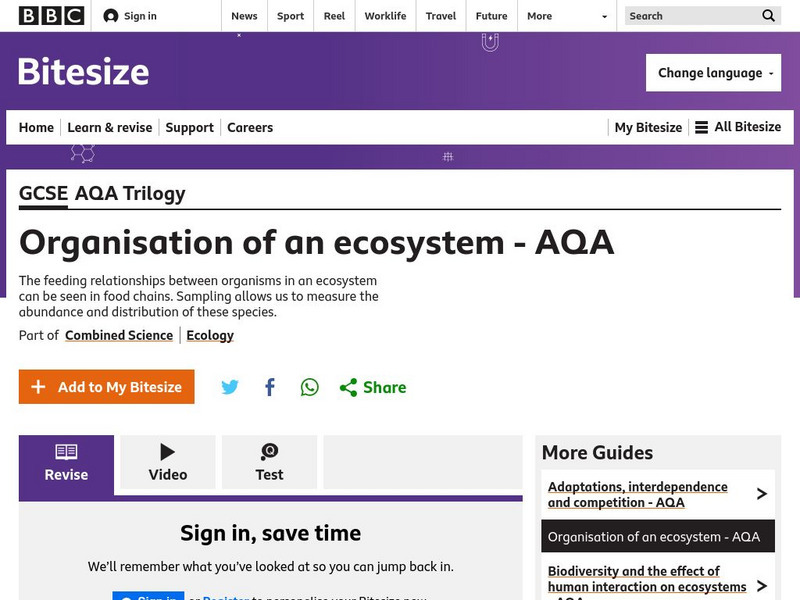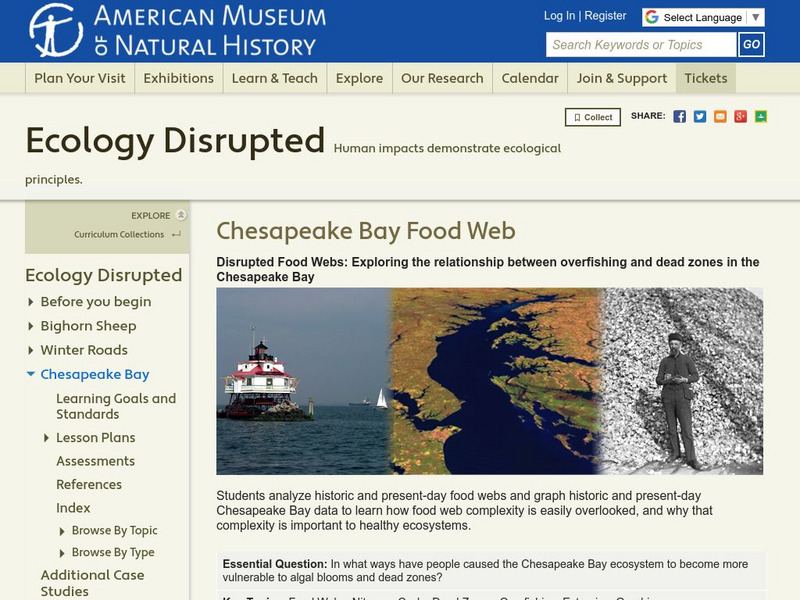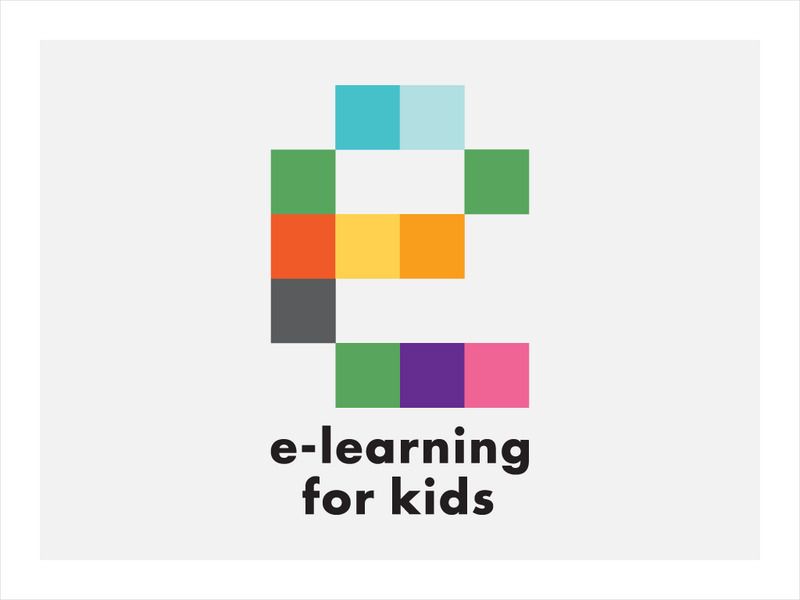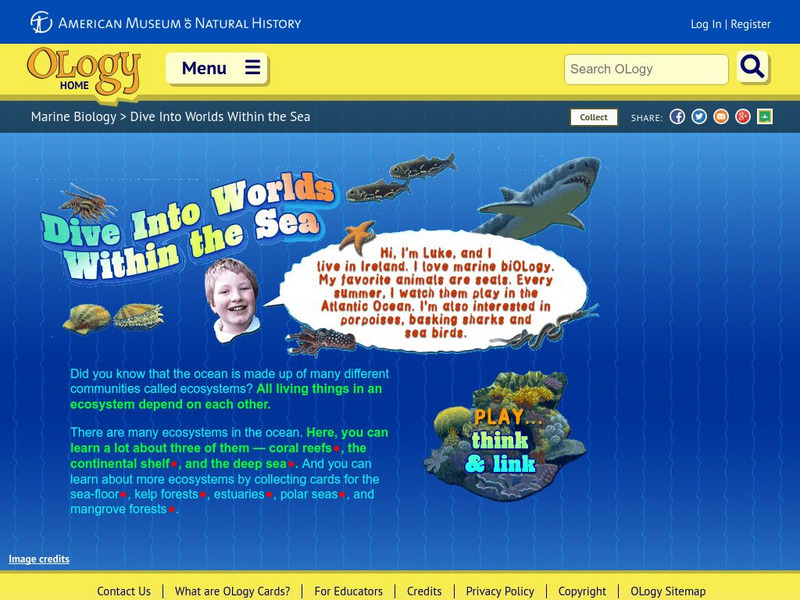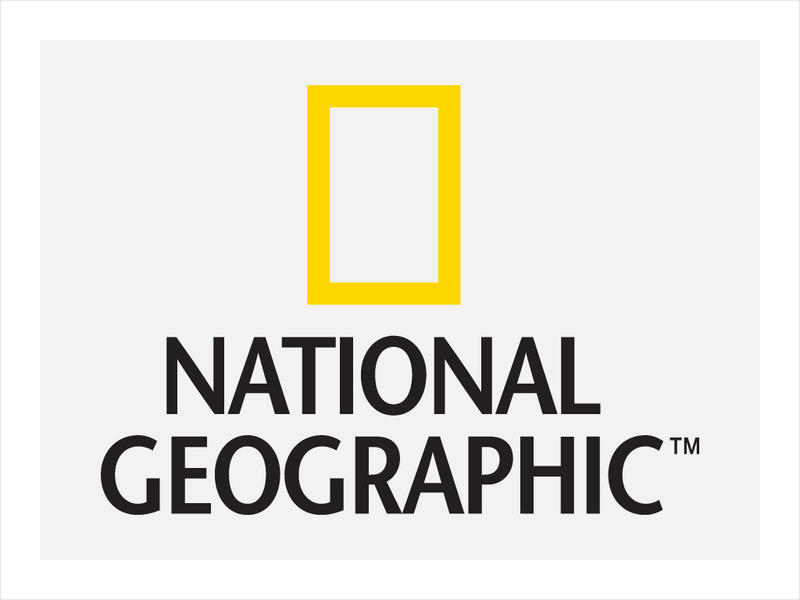Hi, what do you want to do?
University of Utah
University of Utah: Learning Center: learn.genetics: Great Salt Lake Food Web
Visualize how energy transfer takes place in two linked food chains, and how it demonstrates the interdependence organisms of the Great Salt Lake.
CK-12 Foundation
Ck 12: Fifth Grade Science: Life Science: The Flow of Energy in an Ecosystem
A module that explains what an ecosystem is and how energy and matter move through them. Students will look at the different roles of plants and animals and at ecological relationships in food chains and food webs.
BBC
Bbc: Gcse Bitesize: Organization of an Ecosystem Aqa
This lesson focuses on the organization of an ecosystem. The feeding relationships between organisms in an ecosystem can be seen in food chains. Sampling allows us to measure the abundance and distribution of these species. It provides...
Science Bob Pflugfelder
Science bob.com: Food Web and Food Chains
The difference between food chains and food webs is explained.
TeachEngineering
Teach Engineering: Got Energy? Spinning a Food Web
Students learn about energy flow in food webs, including the roles of the sun, producers, consumers and decomposers in the energy cycle. They model a food web and create diagrams of food webs using their own drawings and/or images from...
CK-12 Foundation
Ck 12: Episd: Food Webs
[Free Registration/Login may be required to access all resource tools.] A close look at how animals and the environment interact with one another and specifically how the feeding relationships in a food web.
PBS
Idaho Ptv: Science Trek: Food Web
A comprehensive overview of food webs. Includes three videos: a half-hour show, a video short, and a short video where an expert answers children's questions. Other features of the site include facts, links, games and activities, a...
American Museum of Natural History
American Museum of Natural History: Ecology Disrupted: Chesapeake Bay Food Web
In this comprehensive lesson unit, students examine how overfishing has affected Chesapeake Bay's ecosystem. They will study food webs from the past and present and graph related data.
E-learning for Kids
E Learning for Kids: Science: Titanic Shipwreck: What Are Food Webs?
Jorge is a cook in an underwater restaurant. He knows a lot about food webs. Dive in and learn about it with him.
Other
Soil Association: Food for Life Curriculum Pack [Pdf]
A curriculum focusing on food production and consumerism.
John Wiley & Sons
Ray Kroc, Mc Donald's, and the Fast Food Industry
Read the story of Ray Kroc and his journey of making McDonald's a household name on this site. It chronicles his establishing the restaurant chain, the troubles encountered along the way, its rise to the most successful fast-food...
Science Education Resource Center at Carleton College
Serc: Life in Extreme Environments: Who Is on Top in the Food Chain?
In this lesson, students will design experiments to gain some understanding of the feeding rates of Rotifers and/or Tardigrades. They will use organisms collected locally or provided by the teacher to explore differences between their...
Texas Education Agency
Texas Gateway: Organisms and Environments: Organisms Interactions
Learn about food webs, food chains, and organisms interactions in this interactive tutorial.
American Museum of Natural History
American Museum of Natural History: Welcome to Dzanga Sangha
Connect the dots to investigate three different habitats either the forest, bai or river of the rain forest. By connecting the dots students make a food chain to see how organisms in each habitat depend on each other.
American Museum of Natural History
American Museum of Natural History: Dive Into Worlds Within the Sea
Think and Link to investigate three different ecosystem either the deep sea, coral reef or continental shelf. By connecting the dots students make a food chain to see how organisms in each habitat depend on each other.
National Geographic
National Geographic: Marine Ecosystems and Biodiversity
A collection of three lessons where students learn about abiotic factors in marine ecosystems, about marine food chains and biodiversity, and about marine food webs and trophic levels. Includes handouts, website links, and a vocabulary...
Other popular searches
- Desert Food Chain
- Animal Food Chain
- Deciduous Forest Food Chains
- Pond Food Chain
- Ocean Food Chain
- Frog Food Chain
- Food Chains in Biomes
- Arctic Food Chain
- Desert Animal Food Chain
- Ocean Animals Food Chain
- Coral Reef Food Chain
- Marine Science Food Chain







